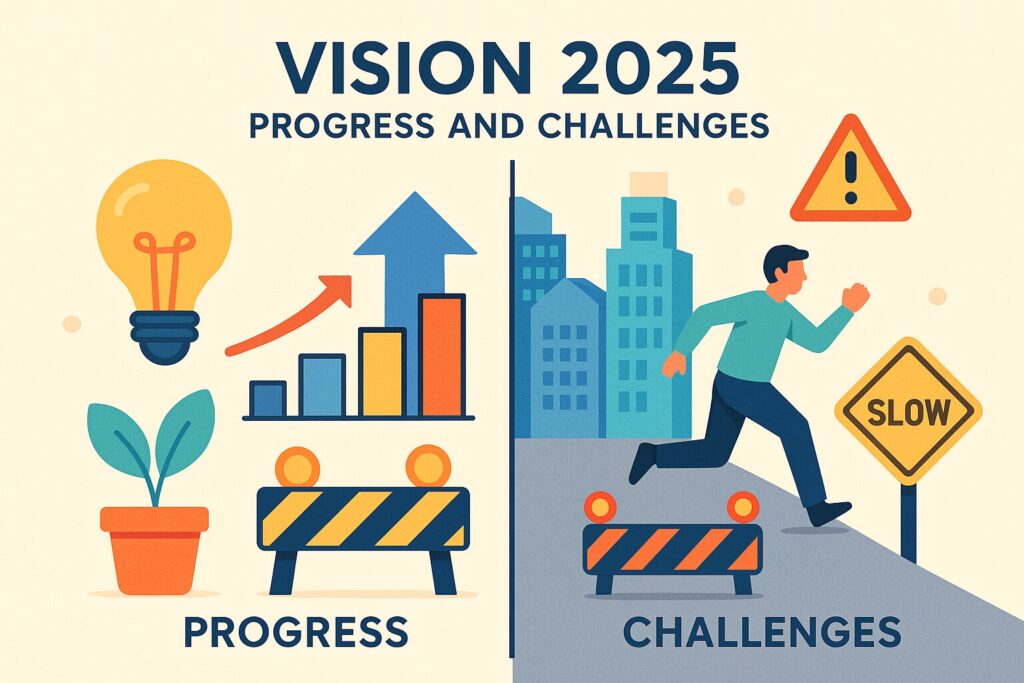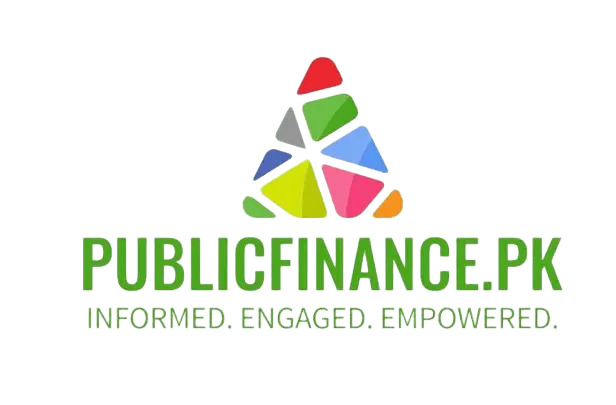
Pakistan’s Vision 2025, launched in 2014, envisioned transforming the country into an upper-middle-income economy by its 75th anniversary in 2025 through inclusive growth, improved governance, and enhanced regional connectivity. With its seven pillars—ranging from institutional reform to energy security—the plan aimed to address structural challenges, boost GDP growth to 8%, and elevate Pakistan’s Human Development Index (HDI) ranking. As the deadline approaches, progress remains uneven: while infrastructure and digitization have seen notable advances, persistent fiscal deficits, political instability, and external shocks like the COVID-19 pandemic and 2022 floods have tempered outcomes. Here’s an assessment of what has been achieved, what lags, and the hurdles complicating this ambitious roadmap.
Infrastructure and Connectivity: CPEC as a Catalyst
The China-Pakistan Economic Corridor (CPEC), a centerpiece of Vision 2025, drove significant infrastructure investment. Over $25 billion has been channeled into energy and transport projects, adding 8,000 MW to the national grid and completing key highways like the Sukkur-Multan Motorway. Port upgrades at Gwadar and improved rail networks boosted regional trade, with transit trade via Afghanistan rising by 35% since 2020.
Key Infrastructure Outcomes (2015–2023):
| Sector | Achievement |
|---|---|
| Energy | 12,230 MW added (coal, hydro, solar) |
| Roads | 1,800 km of highways constructed |
| Digital Growth | 85 million broadband users (vs. 5M in 2015) |
However, CPEC’s Phase-II industrial cooperation lags, with only 3 Special Economic Zones (SEZs) operational against a target of 9, highlighting gaps in execution.
Human Capital: Advances Amid Systemic Gaps
Vision 2025 prioritized education and healthcare, yielding mixed results. Primary enrollment rose from 72% (2015) to 78% (2023), and maternal mortality dropped by 25% due to expanded rural health services. The Ehsaas Program, Pakistan’s largest social safety net, now supports 12 million families with cash transfers. Yet, stunting rates (38%) and literacy disparities (65% national average, 48% for women in Balochistan) persist, reflecting underfunding and administrative inefficiencies.
Human Development Indicators:
- HDI Ranking: Rose from 147th (2014) to 138th (2023)
- Public Education Spending: 1.7% of GDP (below 4% target)
- Healthcare Access: 60% population with primary care access (up from 45%)
Economic Growth: Derailed by External Shocks
Pre-pandemic, GDP growth peaked at 5.8% (2018), driven by CPEC and consumer spending. However, macroeconomic instability—current account deficits, inflation (37.9% in 2023), and debt crises—slowed momentum. The tax-to-GDP ratio stagnates at 10%, undermining public investment. While exports grew by 12% in 2023 (IT sector surged to $2.6 billion), reliance on IMF bailouts (24 since 1958) and low FDI ($1.5 billion in 2023 vs. $2.8 billion target) reveal structural weaknesses.
Governance and Implementation Challenges
Institutional fragmentation and political turnover hindered Vision 2025’s execution. For instance:
- Bureaucratic Delays: 40% of development funds lapsed annually due to approval bottlenecks.
- Policy Continuity: Shifting priorities across governments disrupted projects like the Diamer-Bhasha Dam, delayed by 15 years.
- Climate Vulnerabilities: The 2022 floods ($30 billion in losses) diverted resources from development to rehabilitation.
The Road to 2025: Recalibrating Priorities
To salvage remaining goals, policymakers emphasize:
- Debt Management: Reducing reliance on costly external borrowing via tax reforms and export diversification.
- Provincial Coordination: Aligning provincial PSDPs with federal priorities for cohesive health and education strategies.
- Private Sector Mobilization: Incentivizing CPEC SEZs through tax holidays and infrastructure guarantees.
While Vision 2025’s full realization appears unlikely by next year, its framework has spurred critical conversations on sustainable development. Lessons from its partial success—notably the need for stability, innovation, and climate resilience—must inform future planning. As Pakistan drafts its Vision 2035, bridging the gap between ambition and execution will be paramount.
This article was published on PublicFinance.pk.
